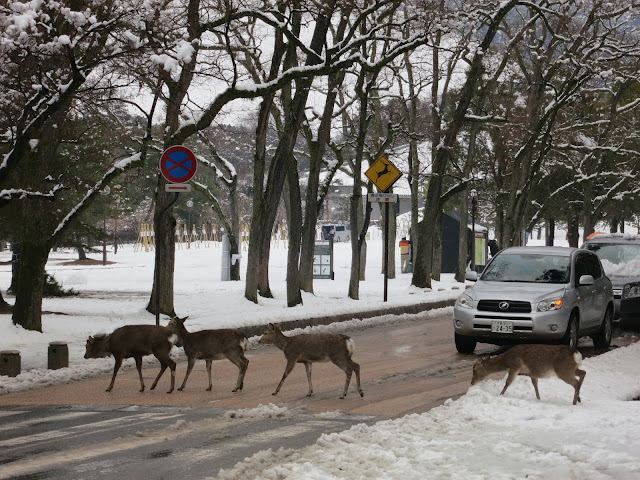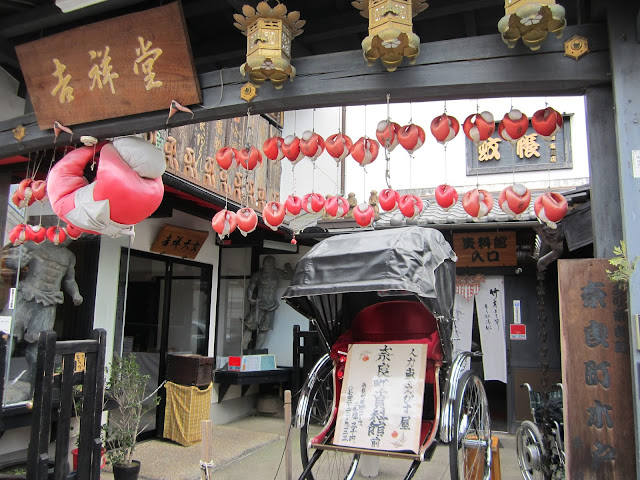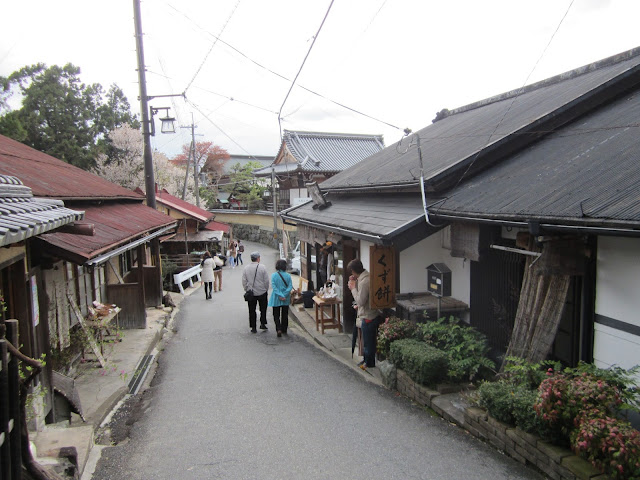As I was staying in Kobe, Nara was a good location for day trips. Went there several times in different seasons using the Hanshin 1 Day Pass (1800 yen) that not only covers the round trip to Nara, but also the buses there, as well as provides discounts for attractions.
Quite a number of the main attractions are located near Nara Park(奈良公園)in Nara City. There are many deer there, and it is interesting how they would bow to visitors for deer crackers.
Was truly impressed by Todaiji(東大寺), the head temple for all Buddhist temples in Japan, constructed in 752. The main hall-- Daibutsuden(大仏殿)is the world's largest wooden building! It houses a 15 meters tall Buddha, 1 of 3 great Buddha statues in Japan.
Kasuga Taisha(春日大社), Nara's most representative shrine, is nearby. There are many stone and bronze lanterns in the premise, donated by worshippers. Many stone lanterns also line the way to the shrine.
Naramachi(奈良町)is a former merchant district with narrow alleys. Some of the old houses here have been converted into museums, shops and cafes. It was fun roaming around the area.
Unesco World Heritage Site-- Gangoji(元興寺)is in Naramachi. There is also Naramachi Shiryokan(奈良町資料館)that is only opened on weekends and public holidays, showcasing things related to Naramachi's history.
Also went to Kofukuji(興福寺), but the main hall was under reconstruction. Its 5 storey pagoda is Japan's second tallest.
Among the many temples in Nara, Todaiji, Gangoji, Kofukuji, Yakushiji(薬師寺), Saidaiji(西大寺), Horyuji(法隆寺)and Daianji(大安寺)are known as the "7 Great Temples".
In this trip, I also visited Hokkeji(法華寺)for a Traditional Hina Doll Exhibition, with about 100 dolls on display.
In the night, went to Nigatsudo(二月堂)for Otaimatsu(お松明)ceremonies that are held from 1st to 14th March every year. Otaimatsu is a part of Omizutori(お水取り), a kind of Buddhist repentance rituals. Giant torches are lit up and lifted over the crowd, said to bless them with a safe year. That night, it was cold and snowing lightly, but still quite many people were there for the ceremony.
In a separate trip, I went to UNESCO world heritage site-- Horyuji(法隆寺), 1 hour bus journey from JR/Kintetsu Nara station. The premise is bigger than I thought. There are a few buildings, some of which are the oldest wooden structures in the world! Though they are very well-preserved.
I also went to Nara a few times for sakura. Mount Yoshino is ranked as the number 1 sakura viewing spot in Japan, famous for its "thousand cherry trees at a glance"(一目千本)view. Though I wasn't too impressed by what I saw, maybe because the weather wasn't good, or that my favorite type of sakura is the weeping type(枝垂桜)and not mountain type(山桜).
Also listed as top 100 sakura viewing spots in Japan are Nara Park and Koriyama Castle Ruins(郡山城遺跡). Nara Park is spacious and the cherry trees are not cluttered together, so view wasn't impressive. I enjoyed Koriyama Castle's more, with the cherry trees around the moat, and a few nice weeping sakura in the castle town beside.
Also went to Mount Katsuragi(葛城山)which is located between Nara and Osaka prefectures for wild azaleas in May.































0 comments:
Post a Comment